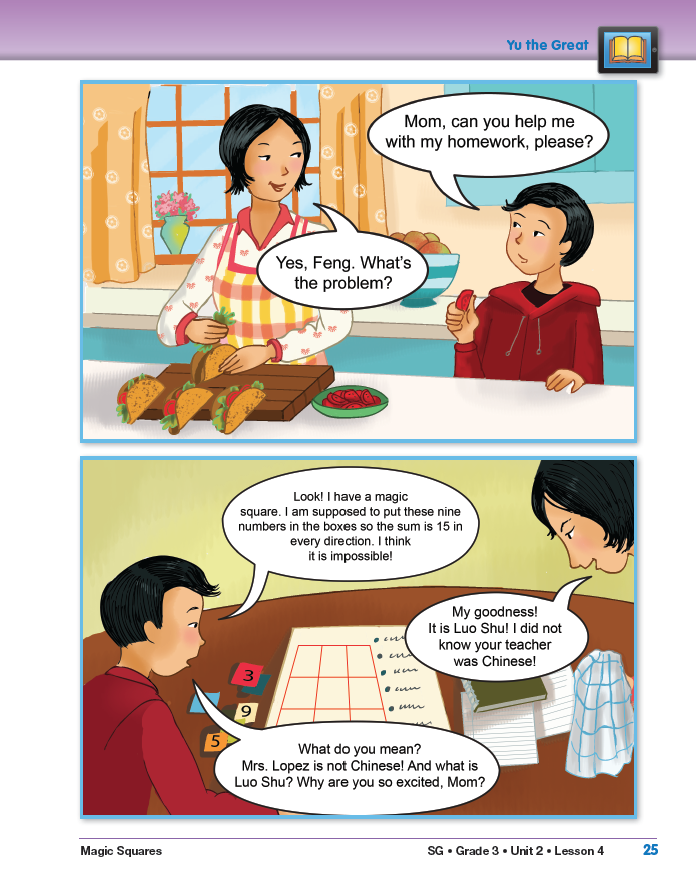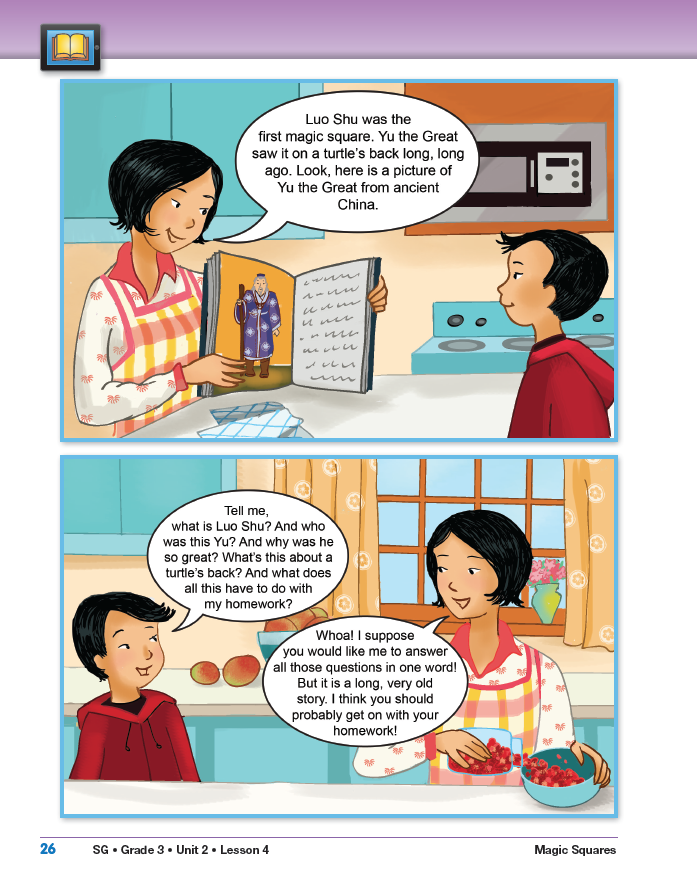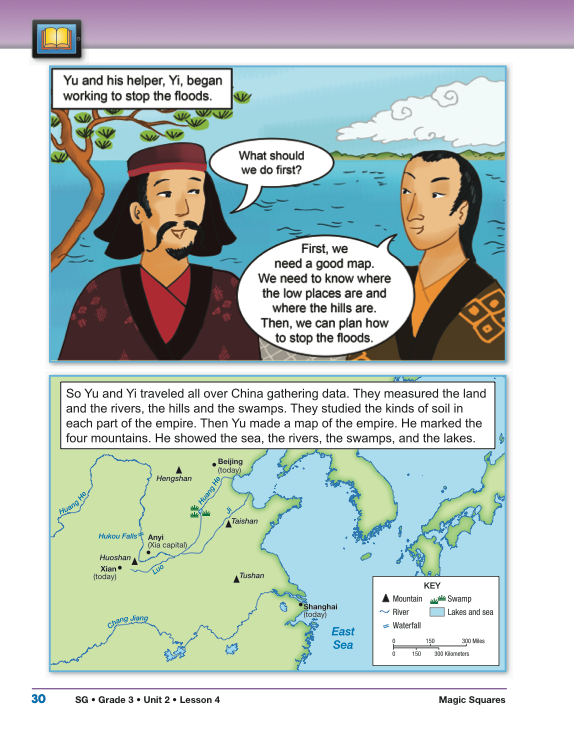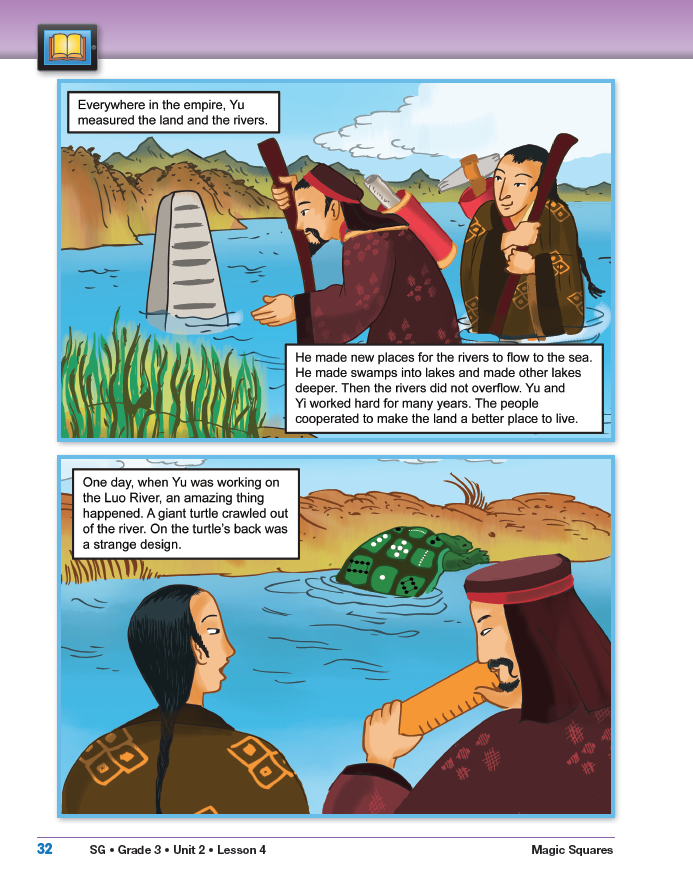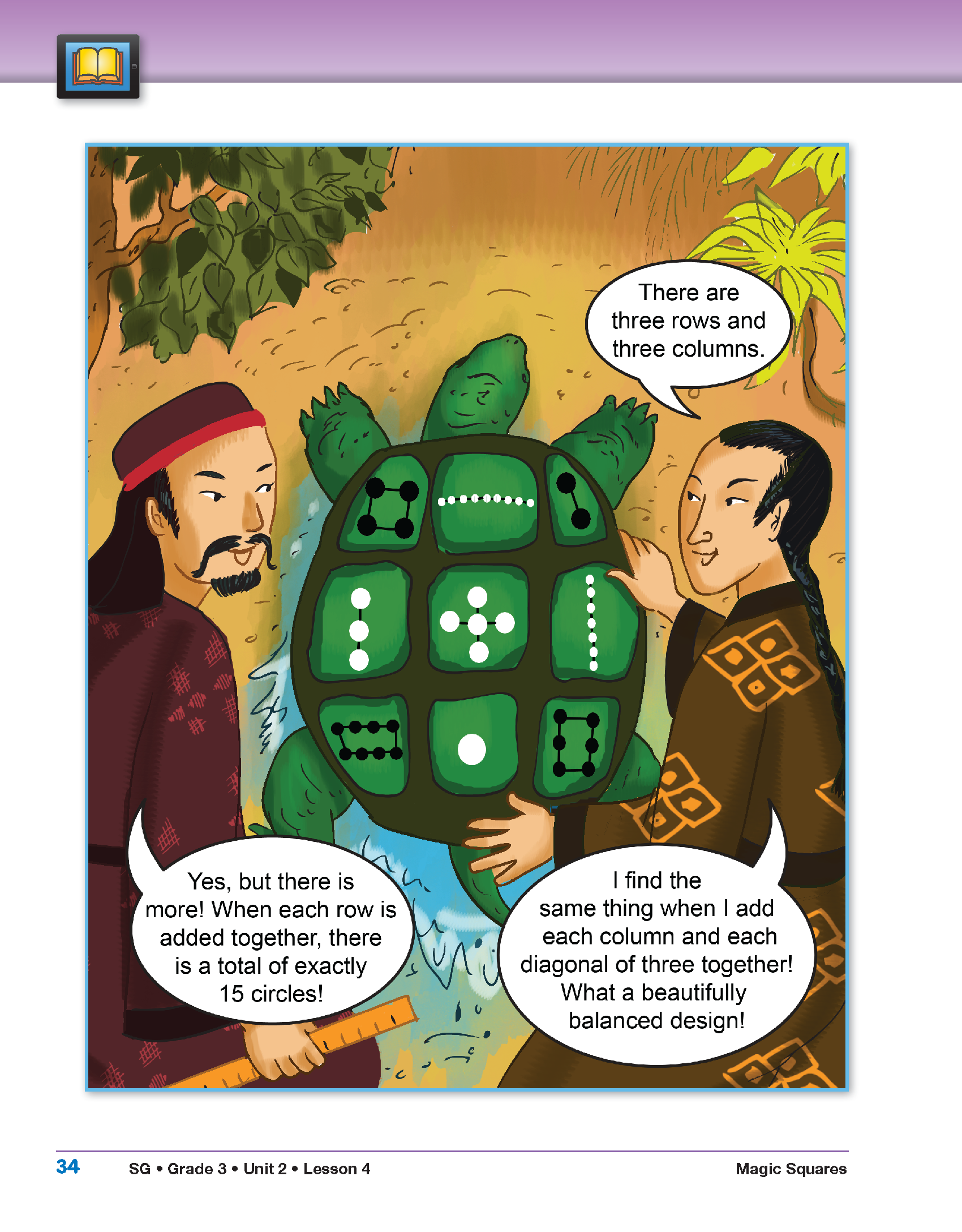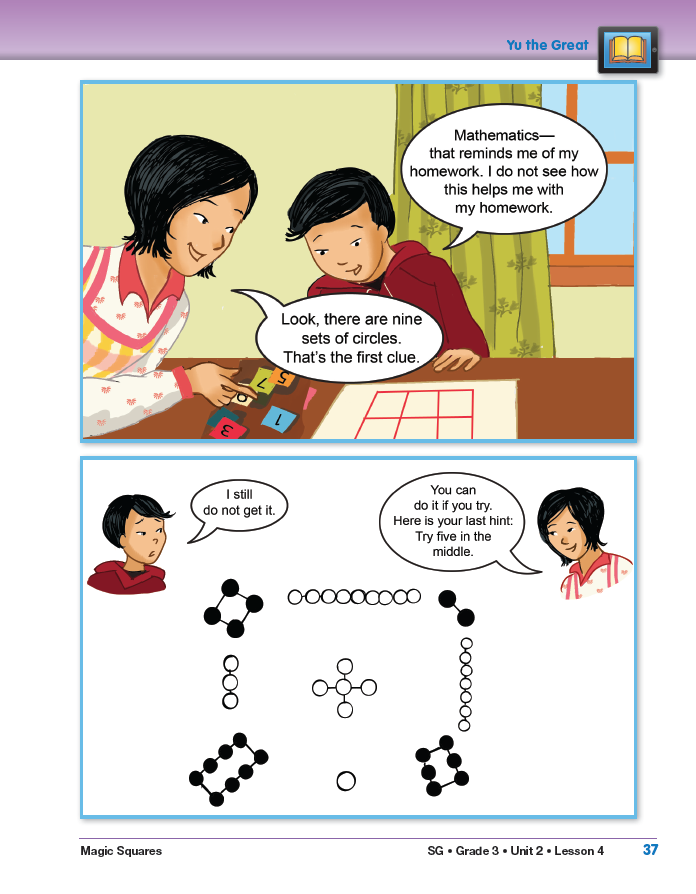Read Yu the Great. Begin the lesson by asking students to read the story “Yu the Great: A Chinese Legend” in the Student Guide.
This story can be assigned as independent reading before reading and discussing it together as a class. Students can read it individually, with a partner, or in a small group.
In this story, Feng, a Chinese-American boy, asks his mother for help in arranging the digits 1 through 9 in a magic square. Feng's mother recognizes the problem as the ancient Chinese design called Luo Shu. At her son's request, she tells him the legend of the discovery of Luo Shu.
Feng's mother tells the story of Emperor Yao, whose land is being ravaged by floods. Yao assigns Yu the task of taming the floods. Yu and his assistant, Yi, work for many years mapping the empire, deepening river channels and lakes, and building dams and dikes. On the banks of the river Luo, Yu and Yi see a giant turtle with a curious design on its back. The design is Luo Shu, the first magic square. Yu and Yi study the design and are inspired by its symmetry and balance to create a Great Plan for the empire. Years later, Yu becomes the emperor.
The multicultural-historical perspective in this story relates mathematical processes to the contributions of an ancient culture. Opportunities for students to experience ancient methods for approaching problems are important. This perspective is intended to foster respect for the contributions of the groups involved.
Use the prompts to help guide a class discussion about the story Yu the Great.
Page 26
The story Feng's mother relates took place about 2200 BCE. You might want to ask your students how long ago this was.
BCE refers to Before Common Era. Common Era (CE) is the most commonly used year-numbering system. The numbers in the Common Era system begin with the year 1 CE. 2200 BCE would be 2200 years before 1 CE.
Page 30
Yu and his helper Yi begin their task by gathering information that they used to make a map of the empire.
- Why would making a map be a good first step toward controlling the floods? (In order to prevent the flooding, Yu and Yi need to see the area as a whole. They need to collect data about the land. They need to know where the rivers, the sea, and the lakes are in relation to the hills and lowlands. They need to know what natural features they can use as they create their plan.)
- What do the symbols on the map stand for? (The symbols are in the map key and help the reader interpret the map correctly. This key shows the map's scale and shows where there are mountains, rivers, dams, swamps, lakes, and seas.)
Page 32
Yu and Yi continue their work to ease the flooding in the empire. One day they see an amazing sight.
- What purpose do you think the post with the markings on it has? (The post measures the water level. By recording the river's height periodically, Yu and Yi can gather data and find a pattern to help them control the floods. Also, the rising water level will warn Yu and Yi if a flood is coming, so they can warn the nearby villagers.)
- Could such markings really appear on a turtle's back? (Probably not. Although something about the turtle's appearance may have inspired Yu, it is not likely that there were clear markings on the turtle's back.)
Many traditional stories were written to explain how something came to be. The West African Anansi tales and European fairy tales explain the origin of many natural phenomena.
Page 34
As Yu and Yi studied the design on the turtle's back, they noticed that there was both symmetry and balance.
- What patterns can you find in the design on the turtle's back? (There are many patterns for students to notice. Some possible responses include: All the middle groups in each row, column, and diagonal contain an odd number of circles. All the corners contain an even number. The larger even numbers are at the bottom of the design while the higher odd numbers are at the top, balancing each other. When you add the opposite corners on the diagonal, the sum is 10.)
Page 37
On the last page of this story, Feng remembers his homework assignment. He is not sure how the story of Yu the Great can help him. His mom reminds him of Luo Shu, the design on the turtle's back, and then gives him a hint to put the number 5 in the middle square of his magic square homework.
- Why do you think his mom told Feng to put a 5 in the middle box of his magic square homework? (When you look at Luo Shu, there are five circles in the middle of the design.)
- What do you think Feng should do next on his homework page? (He should count the circles in each of the sections from Luo Shu and then put the number from each on his magic square.)















